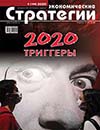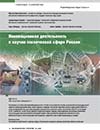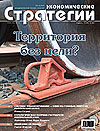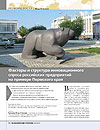Subject-Oriented Business Process Management as a Tool for Innovative Development of an Enterprise
DOI: 10.33917/es-4.196.2024.128-136
The article explores mechanisms for increasing resilience and sustainability of commercial organizations in conditions of growing instability of the external environment. Approaches to understanding viability, sustainability and adaptability of an organization are analyzed. The concept of managerial cross-section is introduced. Among the highlighted sections, the authors examine in more details the tools for studying a communication aspect. Advantages of subject-oriented management for designing communications in an organization are described, some risks of implementing the proposed strategy are identified. Relevance of the study is determined by parameters and trends of change in the modern market environment, which really necessitate to strengthen the dynamics of renewal and adaptation processes, since acceleration of technological innovation is not accompanied by adequate and comparable development of management models. Results obtained can be applied for theoretical research into the functioning of sociotechnical systems of different scales. Also, the proposed approach can be put into practice as part of the development of measures aimed at transforming the company’s business model or improving the efficiency of operational management.
References:
1. Lavrikova Yu.G., Buchinskaya O.N., Myslyakova Yu.G. Teoriya khaosa: rasshirenie granits ekonomicheskikh issledovaniy [Chaos Theory: Expanding the Frontiers of Economic Research]. AlterEconomics, 2023, vol. 20, no 1, pp. 79–109, DOI: 10.31063/AlterEconomics/2023.20-1.5
2. Abramov V.I., Churkin D.A. Otsenka urovnya zrelosti sistemy upravleniya vzaimootnosheniyami s klientami [Assessing the Maturity Level of a Customer Relationship Management System]. Vestnik universiteta, 2022, no 12, pp, 5–13.
3. Pratt M., Kakula S. Motivatsiya v kommercheskoy kompanii s ispol’zovaniem kommunikatsiy, osnovannykh na tekhnologiyakh: V kn.: Dingli A., Khaddod F. Iskusstvennyy intellekt v Industrii 4.0. Issledovaniya v oblasti vychislitel’nogo intellekta [Motivation in a Commercial Company Using Technology-based Communications: In: Dingli A., Haddod F. Artificial Intelligence in Industry 4.0. Research in Computational Intelligence]. Springer, 2021, vol. 928, DOI: 10.1007/978-3-030-61045-6_2 https://link.springer.com/chapter/10.1007/978-3-030-61045-6_2
4. Abramov V.I., Abramov I.V., Polivanov K.V., Semenkov K.Yu. Kontseptual’naya mode’’ tsifrovoy sistemy analiticheskoy podderzhki distantsionnogo upravleniya personalom organizatsii [Conceptual Model of a Digital System of Analytical Support for Remote Management of an Organization’s Personnel]. Ekonomika, predprinimatel’stvo i pravo, 2023, vol. 13, vol. 7, pp. 2341–2352, DOI: 10.18334/epp.13.7.118326.
5. Romanova O.A., Sirotin D.V., Ponomareva A.O. Ot ekonomiki soprotivleniya — k rezil’entnoy ekonomike (na primere promyshlennogo regiona) [From the Economy of Resistance to the Resilient Economy (Using the Example of an Industrial Region)]. AlterEconomics, 2022, vol. 19, no 4, pp. 620–637, DOI: 10.31063/AlterEconomics/2022.19-4.4









